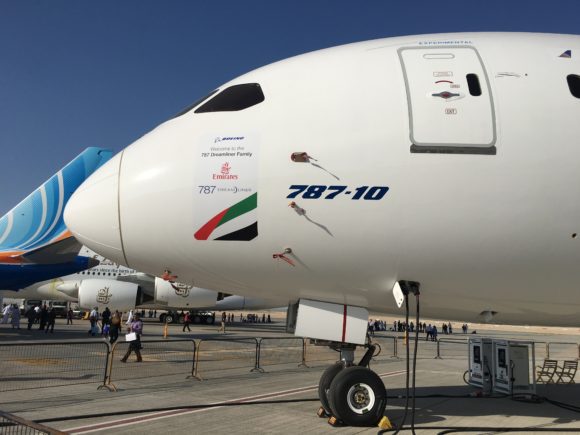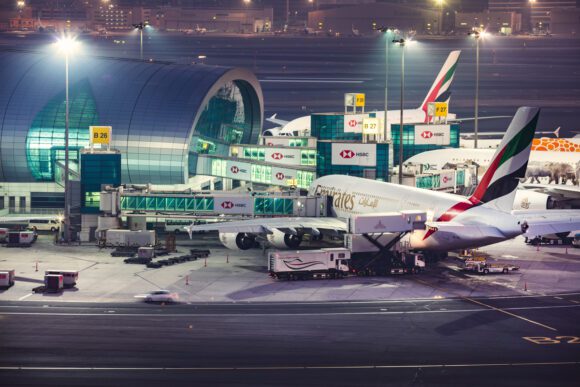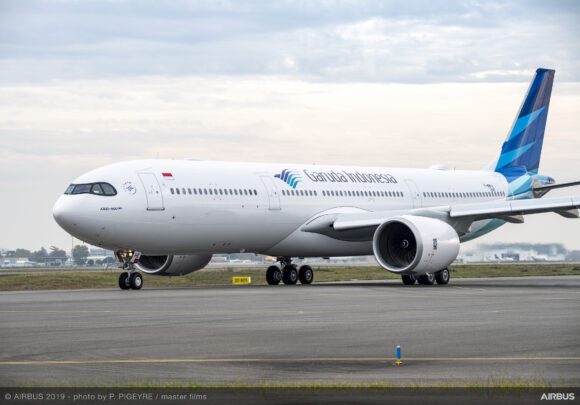Last week’s decision to end production of the A380 has not only been a painful one to Airbus but also marks an important re-think at Emirates on its short- and long-term fleet plans. Actually, the airline has gone back on its strategy that was decided on in 2013.
At that year’s Dubai Air Show, Emirates announced its block-buster follow-on order for 50 A380s, the biggest single order the type ever received in its brief history. It would bring the number of ordered doubledeckers to 140 once all were delivered.
At the same air show, Emirates announced its order for 150 Boeing 777X’, 115 -9s and 35 -8s, confirmed in July 2014.
The order confirmed Emirates fleet strategy to focus on the big jets, with the Airbus A380 and Boeing 777-300ER/777X becoming the backbone of the airline from the 2020s. It started phasing out the Airbus A330s from 2011, with the last to leave in 2016. That same year the last A340-200s, -300s and -500s had left and so had the Boeing 777-200(ER), with the last -300 retired in 2018.
The 100th A380 for Emirates was delivered in November 2017. (Richard Schuurman)
2017 Dubai Air Show turning point
The first re-think became evident in 2017. Again, the Dubai Air Show was the stage. A week before, at the delivery of the 100th A380 in Hamburg, chairman His Highness Sheikh Ahmed bin Saeed al Maktoum confirmed that Emirates and Airbus were in talks over another A380 order. He praised the type, which had played a pivotal role in the airline’s marketing strategy since entering service in 2008, was hugely popular with passengers and had allowed Emirates to make money on routes where an A380 was supposed to be too big.
The order was expected to be signed on the morning of the first day of the Dubai Air Show. I was there when the staff of the Airbus and Boeing media teams and many journalists waited anxiously for the announcement. Any announcement. But when Sheikh Ahmed entered together with Boeing’s Kevin McAllister, the Airbus people looked at each other in surprise and left the room. Emirates announced an order for 40 787-10s instead for delivery from 2022.
The A380 follow-on order would have to wait until January 2018 and was the last one by John Leahy before his retirement as Airbus COO Sales. Sheikh Ahmed signed an order for 20 A380s, plus 16 options of which there was no doubt that confirmation would come in time.
The Trent issues
Emirates was expected to select the Rolls-Royce Trent 900 as the obvious engine of choice, just as it had done for the batch of 50 ordered in 2013. But durability problems with high-pressure compressor blades that still need an upgrade and performance issues in the hot and sandy Dubai climate created doubts within Emirates if the Trent 900 was indeed the obvious choice.
General Electric and Pratt & Whitney grasped the opportunity to once again offer their Engine Alliance GP7200, which has been fitted to the first 90 A380’s in Emirates fleet. Returning from Dubai last April, GE was positive a deal would be close. But at the 2018 Farnborough Airshow GE’s David Joyce admitted that all was very quiet from Dubai.
In October Emirates President Sir Tim Clark confirmed to German journalist Andreas Speath that a deal with Rolls-Royce was in the pipeline, only waiting to be finalized.
Thus, it must have been around mid-2018 when the Emirates board must have got second thoughts about its fleet strategy. Were 162 and possibly 178 A380s not too many? In April the airline had started parking doubledeckers and 777s at Dubai World Central, officially because of traffic fluctuations during the low-season. But as the Boeings returned to service during the Summer months, the airline kept parking A380s for on average four weeks at a time. This has continued to this day, with on February 17 eight A380s in storage at DWC.
Remember too that the follow-on order for the A380s is listed in the 2017/18 annual report as ‘authorized and not contracted’, as is the order for the 787-10.
Boeing made a special decal to celebrate Emirates’ commitment to the 787-10 at the 2017 Dubai Air Show, but the order hasn’t been confirmed. (Richard Schuurman)
Fast forward to February 14 2019, when Emirates confirmed its fleet plans after rumors about canceling the A380 order hit the floor a couple of weeks earlier. As reported the airline will take delivery of 14 more A380s while cancelling 39. This includes all 20 from January 2018 and 19 from the 2013 order. Instead, Emirates will bring 40 A330-900s into the fleet from 2021 for use on regional routes and 30 A350-900s from 2024 on long-haul routes. The latter means a return of the A350, of which 70 -900s and -1000s originally featured in the plans since 2007 but were canceled in 2014 over worries of performance shortfalls. A surprise return then, as Sheikh Ahmed had almost ruled out the A350 when announcing the 787-10 deal in November 2017.
A difficult decision
Airinsight has asked Emirates about what has changed between announcing the order for more A380s in January 2018 and the cancellation/conversion announced on February 14. A spokesperson replies: “Emirates made the difficult decision to give up its A380 order and had to review its fleet mix, as it was clear that the A380 could not be fit for the future without new engines that kept up with technology advances in propulsion, or investments to further develop the aircraft. After months of discussions, Emirates, Airbus, and Rolls-Royce came to an agreement on the A380 contract. Emirates decided on the A330Neo and A350s after a careful evaluation of our needs. The decision is also in line with our long-standing strategy to operate a young, modern, and efficient all-wide body fleet.”
Asked about the status of A350 and 777X/787 orders, Emirates says: “We continue to evaluate our fleet options, including the 787s”. This leaves space for interpretation and isn’t a solid confirmation of the 787-10 order, which reportedly is in doubt over muted performance shortfalls of this type as well. It neither answers questions on the 777X order and if fleet size is still the right fit since announcing the order 5,5 years ago.
Emirates didn’t reply to our question if the A350 order includes the option to convert to the larger -1000 or any A350 version that might come along before 2024, which could be the aircraft Qantas is eyeing as its airliner for non-stop operations between Sydney and London.
By reducing the A380 fleet to 123, we asked if this means if Emirates will have indeed 123 flying around or if the oldest A380s will have gone in retirement by 2021/2022 as they come out of their lease contracts. The spokesperson says: “Bear in mind the A380s we receive in 2021 will be flying for another 15-20 years, so it’s not quite ‘the end’ of the A380 for a while. As an operator, we will keep the customer experience up to date and world-class, as one would expect of Emirates. We have some units on our books, some on lease or other structures, so retirement age will vary, but we intend to keep flying our A380s for as long as we can.”
“We are the first and only airline in the world to operate an all Airbus A380 and Boeing 777 wide-body fleet”, Emirates says in its 2017/18 annual report. That will stand for another two years until 2021, when the first A330-900 will join the fleet. In a way, it’s back to the past for Emirates again, but a fleet consisting of superjumbos, efficient twin-jets and the latest medium-range airliners will give it the flexibility that is has been lacking since 2016.
The Airbus A330 will return to the Emirates fleet in 2021 with the A330-900. (Airbus)
Views: 23






